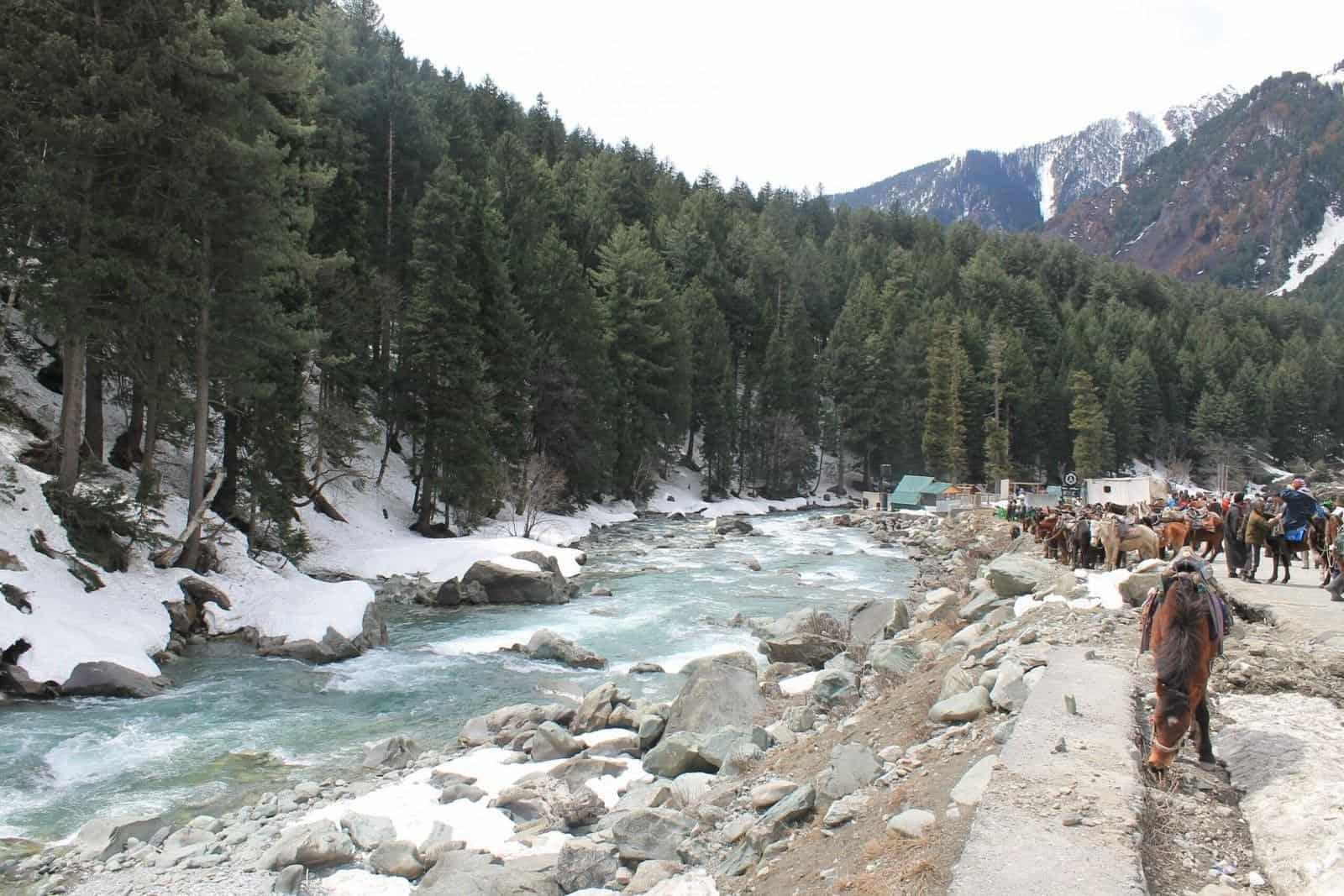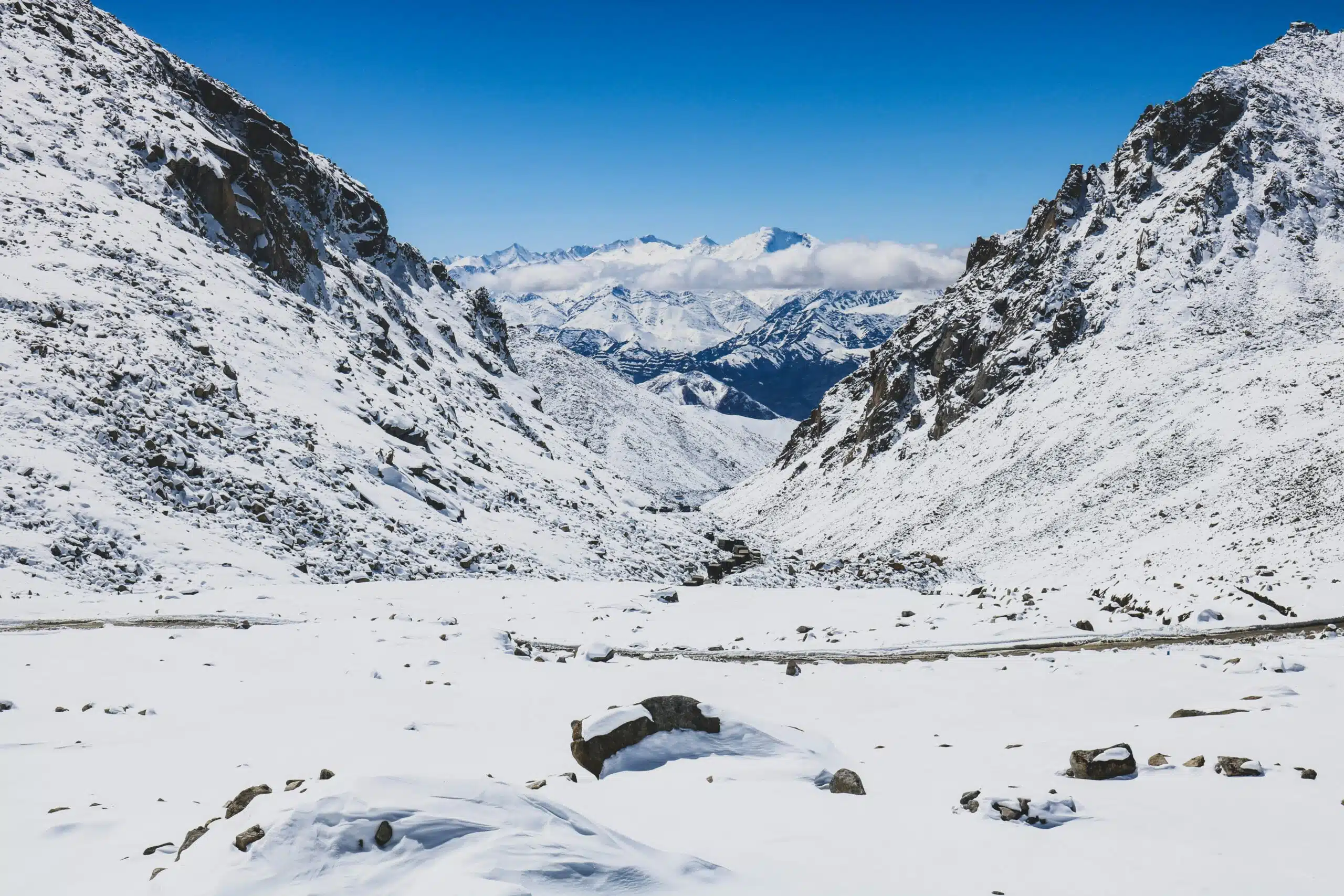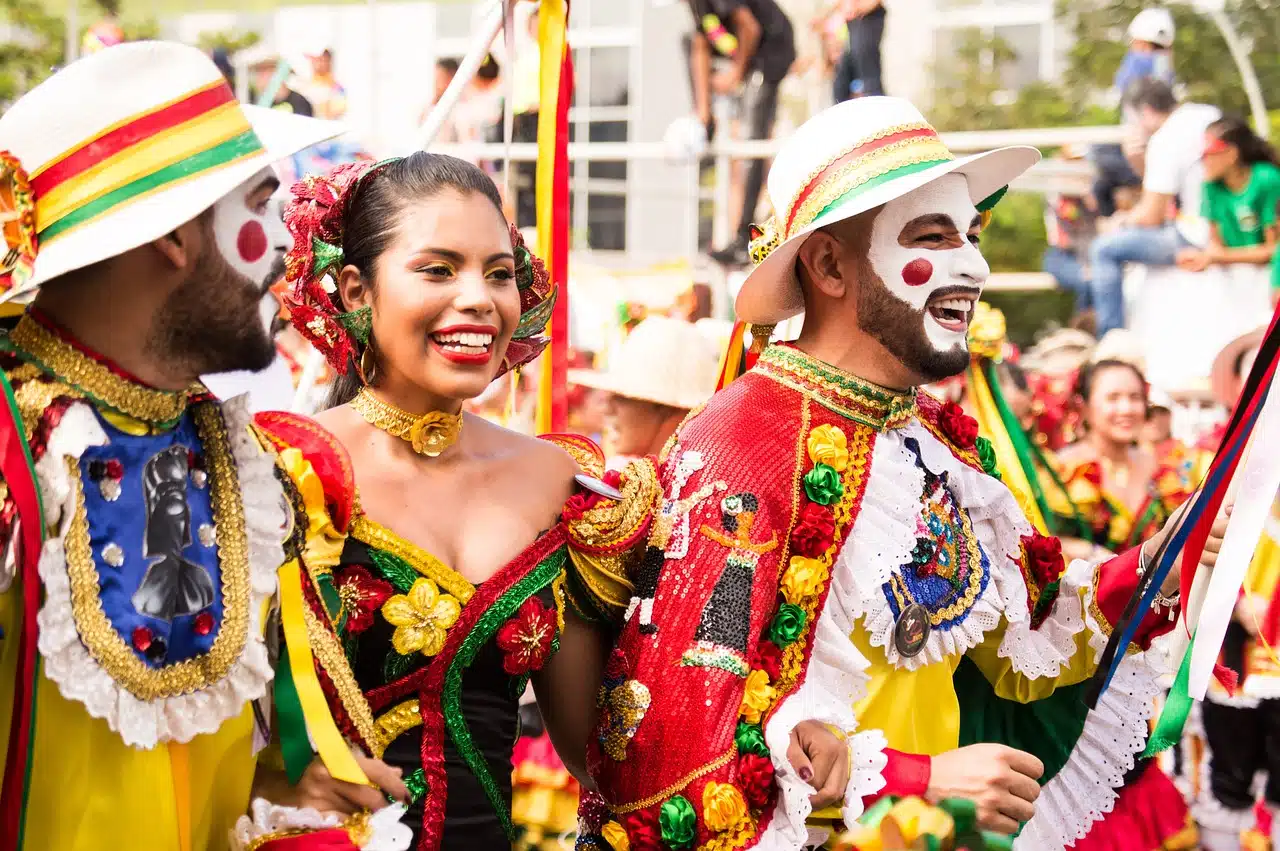Best Time To Visit Leh Ladakh For Snowfall
Overview
Leh Ladakh, nestled in the northernmost region of India, is a breathtaking expanse of natural beauty and cultural diversity. This high-altitude desert, situated amidst the Himalayas and Karakoram ranges, offers an awe-inspiring landscape that captivates travelers and adventurers alike. With its rugged terrain, pristine lakes, and ancient monasteries, Leh Ladakh has earned its reputation as a paradise for nature enthusiasts and spiritual seekers. This is a complete guide on the best time to visit Leh Ladakh for snowfall.
The region’s stark yet captivating landscape features snow-capped peaks, deep valleys, and expansive plateaus. Pangong Lake and Tso Moriri Lake stand as shining jewels, their azure waters contrasting with the surrounding arid beauty. The vibrant cultures of Ladakh, influenced by Tibetan Buddhism, have enriched the area with monasteries such as Hemis, Thiksey, and Diskit, where visitors can experience a serene spiritual aura.
Explore the stunning beauty of Ladakh through: Leh Ladakh Tour Packages
Popular Ladakh Tours
7D/6N
8D/7N
6D/ 5N
10D/9N
Additional Information About Best Time To Visit Leh Ladakh For Snowfall
Best Time to Visit Leh Ladakh for Snowfall
The best time to visit Leh Ladakh for snowfall is during the winter months, from November to February. This rugged region in northern India transforms into a breathtaking winter wonderland during this period. Snow blankets the picturesque landscapes, including the iconic Pangong Lake and Nubra Valley, creating a surreal white paradise.
However, it’s essential to be well-prepared for extreme cold, with temperatures often plummeting well below freezing. Roads to Leh may be closed due to heavy snowfall, so flying in is the safest option. Adventurous souls can indulge in activities like snow trekking, ice skating, and witnessing the frozen beauty of Ladakh’s monasteries. This season offers a unique and serene Ladakh experience for snow lovers.
Walk through charming villages like Tingmosgang when on Sham Valley Trek.
Peak Snow Months
The peak snow months in Leh Ladakh, December and January, mark a time of unparalleled beauty and serenity, but Leh Ladakh in February also offers a beautiful and less crowded winter experience. Nestled in the lap of the mighty Himalayas, Leh Ladakh experiences heavy snowfall during these months, creating a scene of ethereal charm that enchants every visitor.
December ushers in the winter magic, as the first flakes of snow gently descend upon the landscape. The entire region takes on a surreal aura, with rooftops, trees, and roads adorned in a layer of soft white snow. The iconic monasteries, stupas, and traditional Ladakhi houses become even more captivating as they blend seamlessly with the snowy backdrop.
January, the heart of winter, witnesses a dramatic increase in snowfall, turning Leh Ladakh into a picture-perfect postcard setting. The mountains, valleys, and lakes become covered in a thick blanket of snow, creating an awe-inspiring sight that leaves travelers awestruck.
While the peak snow months offer breathtaking scenery, they also come with their own set of challenges.
Travelers must come prepared with layered clothing, insulated gear, and sturdy footwear to brave the extreme cold.
Despite these challenges, the peak snow months provide an opportunity for unique experiences. Adventurous souls can engage in activities like ice skating, sledging, and even skiing in some areas.
Frozen Lakes
The frozen lakes of Leh Ladakh stand as awe-inspiring marvels, turning the region into a breathtaking spectacle during the winter months. Ladakh in January and February sees iconic lakes like Pangong Tso and Tso Moriri freeze completely, turning into surreal, glistening ice fields.
Pangong Tso, known for its changing hues, takes on a new dimension when its waters freeze solid. The usually vibrant blue surface turns into a shimmering white canvas, reflecting the crisp winter skies and surrounding mountains. Tso Moriri, with its serene beauty, becomes a tranquil frozen expanse, embodying the serenity of the Himalayas in its icy form.
These frozen lakes are more than just picturesque scenery; they offer unique experiences for adventurous souls. Locals and tourists alike engage in activities like ice skating and even cricket matches on the frozen surfaces. The lakes’ frozen beauty also adds an element of challenge and excitement to the famous Chadar Trek—a daring journey across the frozen Zanskar River.
The frozen lakes of Leh Ladakh, though transient in nature, leave a lasting impact on all who witness them. They stand as a testament to the region’s unparalleled natural beauty and its ability to capture the imagination, reminding us of the wonders that the cold season brings to this remote Himalayan paradise.
Chadar Trek
The Chadar Trek in Leh Ladakh is not just an adventure; it’s a daring journey that takes travelers through a surreal frozen landscape and offers a unique experience unlike any other. This thrilling winter trek takes place on the frozen Zanskar River, transforming the riverbed into a mesmerizing pathway of ice, earning its name “Chadar” which translates to “blanket” in Hindi, referring to the sheet of ice that covers the river.
The trek is typically undertaken during the peak winter months of January and February when the Zanskar River is at its coldest and the ice is the most stable. The trek is a challenging endeavor, requiring physical stamina, mental strength, and a sense of adventure.
The frozen river provides an unusual but incredibly rewarding path through the remote Zanskar Valley, connecting isolated villages that are otherwise cut off from the rest of the world due to heavy snowfall that blocks the mountain passes. Trekkers have the chance to witness the local way of life in these villages, gaining insight into the resilience and adaptability of the Zanskari people in the harsh winter conditions.
Apart from the physical challenges, the Chadar Trek offers an unparalleled experience of the stark beauty of Ladakh’s winter landscape. The ice assumes different forms and colors, reflecting the sun and the surrounding cliffs, creating an ever-changing canvas of white and blue hues.
Book here for: Markha Valley Trek
Extreme Cold
Leh Ladakh, nestled in the northernmost part of India, is a region renowned for its stunning landscapes, rich culture, and unique way of life. However, one of the crucial aspects that visitors need to consider when planning a trip to this remote destination is accommodation availability.
Due to its growing popularity as a tourist destination, Leh Ladakh has witnessed an increase in the number of tourists over the years. This surge in tourism has led to a significant development in the accommodation sector. Travelers can now find a range of options to suit their preferences and budgets.
From luxurious hotels and resorts to guesthouses, homestays, and even camping sites, Leh Ladakh offers a diverse array of accommodations. The town of Leh itself, being the main gateway to the region, boasts the highest concentration of hotels and guesthouses.
For those seeking a more authentic experience, homestays provide an opportunity to immerse oneself in the local culture and interact closely with the Ladakhi people.
During the peak tourist season, which generally spans from June to September, accommodation options can fill up quickly. It’s advisable to make reservations well in advance to secure your preferred choice. Additionally, the harsh winter months (October to April) see a significant decrease in tourism due to extreme weather conditions, resulting in fewer accommodation options being available.
Unique Cultural Experiences
Leh Ladakh, often referred to as the “Land of High Passes,” offers a truly unique and captivating cultural experience for travelers. The region’s distinct heritage, shaped by its geographical isolation and Tibetan Buddhist influence, sets it apart as a destination rich in traditions, festivals, and a way of life that resonates with visitors from around the world.
At the heart of Ladakh’s culture is its strong connection to Tibetan Buddhism.
Monasteries, or gompas, are scattered across the landscape and serve as spiritual hubs. These ancient structures, adorned with vibrant murals and intricate architecture, offer visitors a glimpse into the deeply rooted religious practices of the region.
The Ladakhi people, known for their warm hospitality and resilience in the face of harsh climates, welcome visitors with open arms. Staying in homestays provides an opportunity to immerse oneself in local life, participate in daily activities, and savor traditional Ladakhi cuisine. The region’s staple dish, “thukpa” (noodle soup) and “momos” (dumplings), are must-try delicacies that offer a taste of Ladakh’s culinary culture.
Festivals in Ladakh are vibrant and colorful celebrations that reflect the deep-rooted faith of the people. The Hemis Festival, celebrated at Hemis Monastery, is a highlight. It features masked dances, vibrant costumes, and the unveiling of a massive thangka (religious painting) that is displayed once every 12 years. The Losar Festival marks the Ladakhi New Year and is celebrated with great enthusiasm, including traditional dances, and feasting.
Planning and Preparation
Planning and preparation are essential when embarking on a journey to Leh Ladakh in winter, a remote and unique destination in the Himalayas. Due to its high altitude, rugged terrain, and challenging climate, careful consideration is required to ensure a safe and enjoyable experience.
First and foremost, it’s crucial to research and choose the right time to visit. The best time to travel to Leh Ladakh is during the summer months, from June to September, when the weather is relatively milder and the roads are accessible. Winter, from October to April, is harsh and most regions become inaccessible due to heavy snowfall.
Altitude acclimatization is a significant aspect of preparing for a trip to Ladakh. The region’s high elevation can lead to altitude sickness, characterized by symptoms like headache, nausea, and fatigue. It’s advisable to spend a few days in Leh to acclimatize before venturing to higher altitudes. Staying hydrated, avoiding alcohol, and taking it easy during the initial days can help mitigate altitude-related issues.
Obtaining the necessary permits is another important step. Certain areas in Ladakh, particularly border regions, require permits for tourists. These permits can be obtained from the Leh District Magistrate Office or online, and it’s essential to carry them at all times.
Packing appropriately is key to ensuring comfort and safety during your stay. Warm clothing, including layers, jackets, and thermal wear, is essential, even during the summer.
Sun protection items such as sunglasses, sunscreen, and lip balm are crucial due to the region’s high-altitude exposure to the sun. Proper trekking or hiking gear is essential if you plan to explore the surrounding areas.
Travelers should be prepared for limited connectivity and basic amenities in certain areas of Ladakh. Carrying a first aid kit, any necessary medications, and ample cash is advisable, as ATMs may be scarce in remote regions.
Booking accommodations and transportation in advance, especially during peak tourist season, is recommended. While Leh Ladakh offers a range of options, accommodations in more remote areas can be limited.
Lastly, respecting local customs and the fragile ecosystem is crucial. Ladakh’s culture and environment are delicate, and responsible tourism is encouraged to minimize negative impacts on the region.
Winter Wonderland
Leh Ladakh, during the winter months from late November to early March, transforms into a mesmerizing winter wonderland that captivates the senses and leaves an indelible mark on every traveler’s heart. This remote region, nestled amidst the towering Himalayan peaks, becomes a haven for those seeking an enchanting snow-covered landscape and a truly unique travel experience.
As the temperatures plummet, a pristine white blanket of snow envelops the entire region, turning every nook and corner into a scene straight out of a fairy tale. The snow-covered landscapes, frozen rivers, and quaint Ladakhi villages create an ethereal ambiance that is nothing short of magical. The mountains, which during other seasons showcase their rugged beauty, are now softened by a layer of snow that glistens in the sunlight.
Among the most iconic sights during this period are the frozen lakes of Pangong Tso and Tso Moriri. These azure bodies of water freeze over, creating an otherworldly spectacle that seems almost surreal. Adventurous souls can also embark on the famous Chadar Trek, a trekking journey that involves walking on the frozen Zanskar River—a true test of one’s determination and an experience that is unlike any other.
The winter wonderland of Leh Ladakh, however, is not without its challenges. The extreme cold can be unforgiving, with temperatures often plunging far below freezing point. Travelers must come prepared with layers of warm clothing and proper gear to withstand the cold. Accommodation options are limited as many hotels and guesthouses shut down during this period, but those that remain open provide a cozy respite from the frigid temperatures.
Amidst these challenges, the winter wonderland offers a unique opportunity to experience Ladakh’s local culture in a completely different light. Festivals, traditional celebrations, and the warmth of the local people create an atmosphere of unity and resilience against the harsh winter conditions.
For photographers, the snowy landscapes offer a canvas of unparalleled beauty. The play of light and shadow against the snow, the contrast of vibrant prayer flags against the white backdrop, and the architectural marvels adorned with snow create a visual spectacle that can hardly be matched elsewhere.
Visiting Leh Ladakh during its winter wonderland phase is not just a trip; it’s an adventure into a world of enchantment. It’s a chance to witness nature’s artistry at its finest, to connect with the land and its people in a way that few ever do, and to create memories that will warm the heart long after the snow has melted.
Discover the beautiful landscapes of Zanskar through: Zanskar Valley Tour Packages











 Call Now
Call Now Chat With Us
Chat With Us